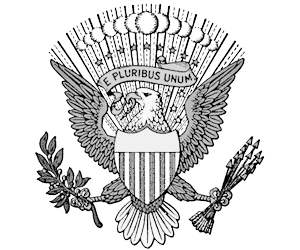|
|
|
|
|
The Hare Krishnas worshipped the Hindu god Krishna and emulated the style of worship, dress, diet and lifestyle of its devotees, including the practice of yoga and meditation. The popular nickname of the Hare Krishnas movement derived from the mantra that followers chant. The worship of Krishna and the Hare Krishna movement spread in the Western world largely due to the International Society for Krishna Consciousness (ISKCON) that was founded by Srila Prabhupada (1896-1977). Facts about
Hare Krishna The 1960'S Hippie Counterculture rejected conventional lifestyles in preference for a freer, independent and simpler way of life, that was closer to nature. The young people of the era rejected the consumer-driven, materialistic lifestyles of the older generation and despised the politicians that had brought the world to the brink of Nuclear War, The hippies embraced the concept of peace and love and as people began to question society they also began to question their religious beliefs, embracing spirituality and exploring different religious ideas and beliefs. Other new religious movements and cults, besides Hare Krishna, emerged during the period that included the Unification Church (the Moonies). Others embraced unconventional, foreign beliefs such as Hinduism, Buddhism and Native American mysticism. The Hare Krishna cult was based on an Indian Hindu sect that dated back to the 1400's and worshipped the Hindu god Krishna as the one Supreme God. The Hare Krishnas emulated the style of worship, diet, dress and lifestyle of its original Indian devotees, including the practice of meditation and yoga. The diet of the followers was strict. Meat, fish and eggs were not allowed, alcohol and drugs, including caffeine, were forbidden. The lifestyle was also strict. Gambling was forbidden and devotees were expected to remain celibate except for purposes of procreation within marriage. The reason for the strict rules concerning the diet and lifestyle of the devotees was because they "disrupted physical, mental and spiritual well-being and increased anxiety and conflict in society." The goal of the devotees is to attain "Krishna consciousness" by the guidance of the scriptures and the spiritual master, or guru. Their central practice is chanting the Hare Krishna mantra from which the movement derived its nickname. The purpose of the Hare Krishna mantra or chant is to enhance consciousness and obtain peace, happiness and total self-fulfillment. The mantra consists of 16 words and includes three Sanskrit names of the Supreme Being; "Hare," "Krishna," and "Rama. The words of the mantra are as follows: Hare Krishna, Hare
Krishna, Krishna Krishna, Hare Hare The most common translation of the mantra is "O Lord, O Energy of the Lord, please engage me in Your service." The movement spread world wide mainly due to the establishment of the International Society for Krishna Consciousness (ISKCON) that was founded by Srila Prabhupada (1896-1977). The teacher, or guru, Srila Prabhupada arrived in New York in 1965 and spread his devotional wisdom that started the spiritual revolution based on the virtues of simplicity, devotion and compassion. The International Society for Krishna Consciousness (ISKCON) advocated street preaching (Sankirtan) in which members tried to spread Krishna consciousness, by chanting the Hare Krishna mantra in public places. The devotional dress consisted of dhotis for men and saris for women. Wearing dhotis and saris geared the wearer towards spirituality and not sexuality as devotees adhered to principles such as modesty, cleanliness and chastity. Colors: A student would wear a white dhotis and an ordained monk would wear an orange or saffron dhotis. The saffron robe represented humility and freedom of vanity. The men shaved their heads because they believe that cleanliness is next to Godliness. They left a small piece of hair, known as the sikha, was left at the back of the head, unlike the similar shaved head and attire of a Buddhist monk. The movement spread quickly, and gained considerable publicity, and financial support, through the interest of George Harrison, one of the Beatles. George Harrison was a spiritual person who had an affinity with India. He studied Indian philosophy, its culture, and its music. In 1966, George Harrison traveled to India to study the sitar with Ravi Shankar. He also met Maharishi Mahesh Yogi, which prompted him to take up Transcendental Meditation (TM) and give up LSD. Maharishi Mahesh Yogi inspired George Harrison to write many new songs but their association was relatively short lived. In 1969, George Harrison and John Lennon met Swami Prabhupada, the founder of the global Hare Krishna Movement in England. Soon after, George Harrison embraced the Hare Krishna movement and was a devotee until his death on November 29, 2001. In 1970, George Harrison produced the Radha Krishna Temple album and wrote many songs, which included devotional references to the religion. His famous song, “My Sweet Lord”, included the Hare Krishna mantra in the chorus. The 1970's witnessed the decline of the movement when the Hare Krishnas came under criticism during the anti-cult movement with allegations by former members of brainwashing and isolation from families. International Society for Krishna Consciousness (ISKCON) still remains under the watchful eye of anti-cult organizations to this day. |
| US American History |
| 1945-1993: Cold War Era |
|
|
|
|
|
First Published2016-04-19 | |||
|
Updated 2018-01-01 |
Publisher
Siteseen Limited
| ||
|
|

